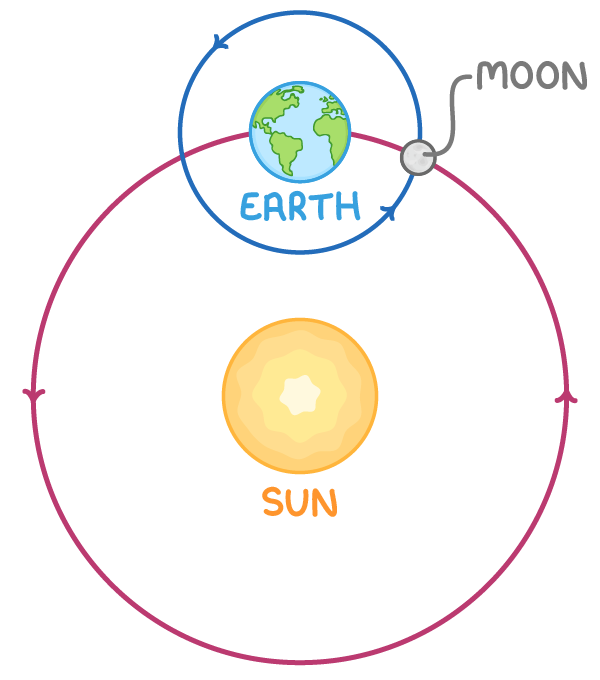Orbits Of Planets & Satellites
This lesson covers:
- How planets and other satellites maintain their orbits around larger masses due to the force of gravity.
- The factors that determine the velocity and orbital period of a satellite.
- The concept and application of geostationary satellites orbiting Earth.
- Utilising gravitational equations to calculate various properties of orbital motion.
Planets are Satellites Orbiting the Sun

A satellite is defined as any object that orbits around a larger mass, primarily due to the gravitational pull exerted by the larger mass. For example, the Moon is a satellite of the Earth, and planets in our solar system are satellites orbiting the Sun.
Planets often have orbits that are nearly circular, and their motion is governed by principles of uniform circular motion.
Factors determining orbital speed
The gravitational pull between the two objects provides the necessary centripetal force for circular motion. By equating the gravitational force and the centripetal force, we derive the equation for orbital speed:
rm v2=r2G M m
v2=rG M
v = √rG M
Where:
- v = orbital speed (m s-1)
- G = Gravitational constant (6.67 x 10-11 Nm2 kg-2)
- M = Mass of the central object (kg)
- m = Mass of the orbiting object (kg)
- r = Distance between the two objects, or orbital radius (m)
Factors Determining Orbital Period
The orbital period (T) is the time it takes for an object to complete one full orbit. In the case of circular orbits:
T = v2πr
By substituting the value of v from the orbital speed equation, we get:
T = 2π√G Mr3
Where:
T = time period (s)
r = orbital radius (m)
G = gravitational constant (6.67 x 10-11 Nm2 kg-2)
M = mass of the central object (kg)
Worked example - Calculating orbital radius of the Moon
The time period of the Moon’s orbit around the Earth is 27.3 days. The Earth has a mass of 5.97 x 1024 kg.
Calculate the orbital radius of the moon.
Step 1: Convert days to seconds
1 day equals 24 hours, which is 24 × 3600 seconds.
27.3 days = 2,358,720 s
Step 2: Formula
T = 2π√G Mr3
Step 3: Rearrange the formula to find radius (r)
r3=4π2G M T2
Step 4: Substitution and correct evaluation
r3=4π26.67×10−11×5.97×1024×(2,358,720)2=5.61×1025
r =3√5.61×1025=382.8×106 m
Application to geostationary satellites
Geostationary satellites are designed to orbit Earth directly above the equator and rotate synchronously with Earth. Their notable characteristics include:
- Completing one orbit every 24 hours.
- Appearing stationary from any point on Earth's surface.
- Being particularly useful for telecommunications, as the angle of the receiver does not need frequent adjustments.